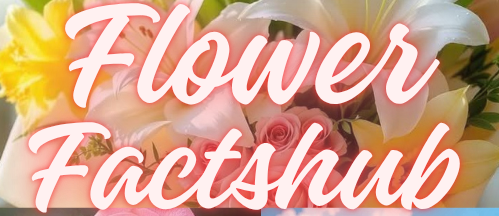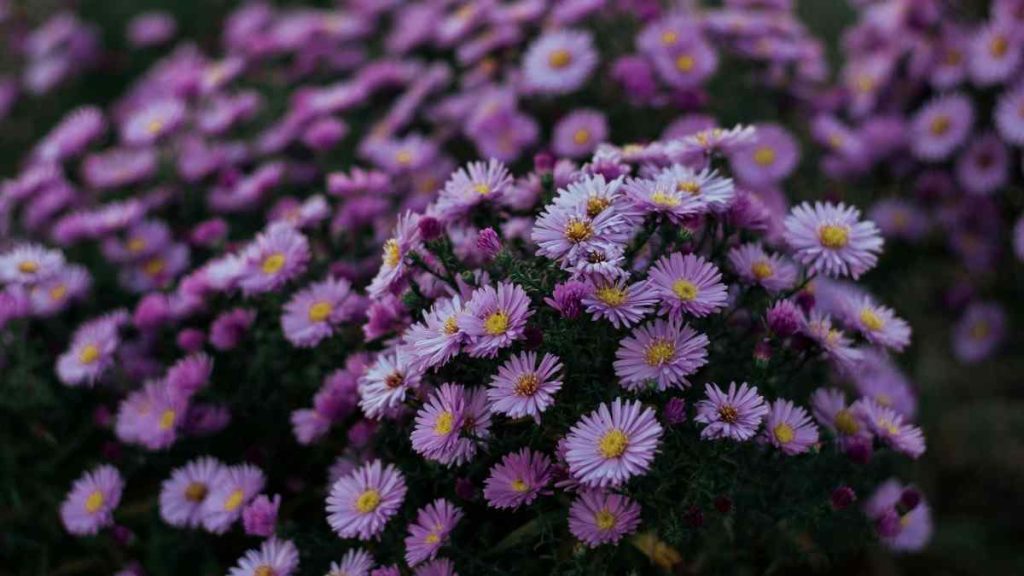Violet flowers are a charming and delicate group of blooms known for their striking purple hues and sweet, often nostalgic fragrance. People often use the term ‘violet’ to describe a color, but it also refers to a specific genus of flowering plants ‘Viola ‘ which includes over 500 species. These flowers grow widely in temperate regions around the world, from forest floors to garden beds, and humans have cherished them for centuries.
True violet flowers belong to the Viola genus in the Violaceae family. The most common species include Viola odorata (Sweet Violet), Viola tricolor (Johnny Jump-Up or Wild Pansy), and Viola sororia (Common Blue Violet). These flowers often bloom in early spring, adding a splash of color to gardens, woodlands, and meadows alike.
Violets typically have heart-shaped leaves and five-petaled blooms that can range in color from deep purple to pale lavender, and even white or yellow in some cases. Their appearance is modest, yet undeniably graceful, often hiding in shady corners or carpeting the forest floor like nature’s looking.
Many people refer to any purple flower as a “violet,” but that’s a common mix-up. Flowers like lavender, lilac, and purple pansies may share the same color palette, but they don’t belong to the same botanical family as true violets. This confusion makes it even more important to distinguish between color and classification when talking about violet flowers.
Violets are incredibly adjustable. You’ll find them across North America, Europe, Asia, and even parts of Africa. Some species thrive in cool, shaded woodlands, while others prefer open fields or garden borders. Their ability to grow in various climates and soil conditions makes them a favorite among gardeners and wildflower lovers alike.
Why Are Violet Flowers Special?
There’s more to violets than meets the eye. In addition to their beauty, violet flowers have a long history of symbolism, medicinal use, and cultural importance. In ancient Greece, violets were associated with love and fertility. During the Victorian era, they symbolized modesty and virtue. And today, they’re still used in perfumes, teas, and even herbal remedies.
History
The history of violet flowers stretches back thousands of years, merging through ancient civilizations, Royal Courts, and legend traditions across the globe. People have long admired these delicate purple blooms not just for their beauty, but also for their symbolic and practical significance in human culture.
Ancient Beginning
The cultural journey of the violet flower begins in ancient Greece, where people closely associated it with love, fertility, and protection. In Greek mythology, Zeus created violets for his lover Io to give her a safe, sweet-smelling ground cover after he transformed her into a cow to shield her from Hera’s jealousy. Because of this myth, violets became symbols of romantic affection and divine love.
The Greeks also used violets in medicinal tinctures and perfumes, believing the flower could calm tempers, cure headaches, and even promote sleep. The city of Athens embraced the violet as a symbol of its cultural refinement, and people often wore wreaths of violets during celebrations and rituals.
In ancient Rome, violets were commonly used in wine and desserts. Roman poets like Virgil and Ovid mentioned violets in their verses, often tying them to themes of springtime, youth, and renewal. People also placed violets on graves as a sign of remembrance, establishing their early role in funeral traditions
Middle Ages
During the Middle Ages, violet flowers began to carry a deeper Christian symbolism, representing modesty, humility, and the Virgin Mary. Monks and nuns cultivated violets in monastery gardens, both for their beauty and their medicinal value. Herbal texts from the era often recommended violets as treatments for respiratory ailments, skin conditions, and digestive issues.
As the language of flowers gained popularity in Europe, people used violets to express faithfulness, modesty, and delicate affection—making them perfect symbols for secret lovers during times when society frowned upon open expressions of love.
The Victorian era saw an explosion of interest in flowers as symbols of emotion and unspoken messages. Violets became a favorite flower among lovers, often tucked into letters or exchanged in small bouquets (called tussie-mussies). Giving someone violets meant, “I’ll always be true,” making them a romantic and meaningful gesture.
Victorians also used violets in cosmetics and home fragrances. Violet-scented oils and soaps became fashionable, and the flower’s modest elegance aligned perfectly with the era’s moral ideals.
Modern Day
Today, violet flowers continue to hold a special place in gardens, herbal medicine, and pop culture. They are the state flower of Illinois, Wisconsin, New Jersey, and Rhode Island, showing their enduring popularity in the United States. In literature and art, violets remain a symbol of innocence, remembrance, and spring’s gentle return.
From poetry to perfume, from ancient mythology to modern symbolism, the violet flower has maintained its quiet but powerful presence in human culture a bloom that may be small, but carries centuries of meaning.
Popular Varieties of Violet Flowers
Violet flowers come in many beautiful forms, ranging from elegant wild blooms to richly colored ornamental varieties. While many people use “violet” to describe any small purple flower, true violets belong to the Viola genus. Let’s explore some of the most popular and beloved types of violet flowers that grace gardens, forests, and even windowsills around the world.
1. Sweet Violet (Viola odorata)
Perhaps the most iconic species, Sweet Violet is famous for its rich, sweet fragrance and soft purple petals. Originally native to Europe and Asia, this flower often grows in shaded woodlands or cottage gardens. People used it in ancient medicine, perfumes, and even candy
Sweet Violet blooms in early spring and is known for its low-growing habit and heart-shaped leaves. It’s also a symbol of modesty and love in many cultures.
2. Common Blue Violet (Viola sororia)
Native to North America, the Common Blue Violet is a cheerful and hardy flower often seen in lawns, meadows, and woodland edges. With its deep purple-blue petals and white throat, it blooms in spring and sometimes again in fall.
This species is also the state flower of Illinois, Wisconsin, and Rhode Island, making it a patriotic pick for American gardeners. It spreads easily and is considered a wildflower by some and a lawn weed by others but its beauty is hard to deny.
3. African Violet (Saintpaulia)
Despite the name, African Violets aren’t true violets they belong to a different plant family. But they’re incredibly popular as indoor houseplants due to their velvety leaves, compact size, and continuous blooming ability.
They come in a range of shades from deep purple to pink, blue, and even white. African Violets are perfect for windowsills and tabletops, requiring only moderate light and regular watering.
4. Johnny Jump-Up (Viola tricolor)
These cheerful little flowers are a type of wild pansy, sometimes called Heartsease. With their unique mix of purple, yellow, and white petals, they’re not only attractive but also edible!
Gardeners often grow Johnny Jump-Ups in cool-weather gardens and containers, where they thrive. These cheerful flowers symbolize happiness and remembrance, and people once used them in herbal remedies and love potions in old European traditions.
5. Dog Violet (Viola riviniana)
Unlike the fragrant Sweet Violet, Dog Violet doesn’t have a scent but it makes up for that with its pretty, lilac-blue petals and adaptability. Found across Europe and the UK, it thrives in meadows, roadsides, and woodland paths.
This variety is important for wildlife, especially as a food source for caterpillars of fritillary butterflies. It adds a natural, wild charm to any garden.
6. Confederate Violet (Viola sororia ‘Priceana’)
A beautiful variation of the Common Blue Violet, Confederate Violet is known for its pale petals streaked with deep purple or blue lines. It’s native to the southeastern United States and often appears in spring.
These flowers look almost like they’ve been painted with watercolor and are prized for their vintage, romantic appearance.
Choosing the Right Violet for Your Space
Whether you’re cultivating a cottage garden, sprucing up a shady border, or adding greenery to your windowsill, there’s a violet flower for every purpose. Outdoor varieties like Sweet Violet and Johnny Jump-Up are great for naturalistic planting, while indoor options like African Violets thrive in pots with minimal effort.
Medicinal and Edible Uses of Violet Flowers
Violet flowers are more than just a pretty face in the garden. For centuries, they’ve been valued for their healing properties and culinary charm. Whether used in ancient herbal remedies or modern gourmet kitchens, violet flowers offer gentle benefits for both the body and the palate.
Medicinal Uses of Violet Flowers
In traditional herbal medicine, violet flowers especially Viola odorata (Sweet Violet) have long been used for their soothing, anti-inflammatory, and detoxifying qualities. Practitioners of natural medicine often turn to violets to treat a range of mild conditions. Here’s how:
1. Respiratory Support
Violets have been used to ease coughs, sore throats, and congestion. Their mucilaginous (gel-like) properties help soothe irritated mucous membranes in the respiratory tract, making them a popular ingredient in herbal syrups and teas.
2. Skin Care and Wound Healing
Violet leaves and flowers are rich in antioxidants and salicylic acid, which can help soothe eczema, acne, and minor skin irritations. They also have a gentle cooling effect that makes them useful in compresses or poultices for inflammation or insect bites.
3. Lymphatic and Detox Support
Herbalists sometimes use violets to support the lymphatic system, aiding the body in flushing out waste and toxins. Violet tea or tincture is said to have a mild diuretic effect, helping with fluid retention and detoxification.
4. Mild Pain Relief
Violet salves and oils have been used topically for joint pain, swelling, and headaches, thanks to their natural anti-inflammatory properties. They’re gentle enough for children and those with sensitive skin.
Edible Uses of Violet Flowers
Beyond their healing touch, violet flowers are edible, fragrant, and delightfully decorative, adding a touch of elegance and subtle sweetness to various dishes.
1. Candied Violets
One of the most famous culinary uses is candied violets, a European delicacy dating back to the 17th century. These sugar-coated blossoms are used to decorate cakes, pastries, and chocolates, especially in French and British cuisine.
2. Violet Syrup
People often steep violet flowers into a syrup, admired for its beautiful color and floral flavor. They add this syrup to lemonade, cocktails, teas, or desserts to create a light, perfumed taste.
3. Violet Tea
People use both violet flowers and leaves to make a mild, soothing herbal tea. This tea offers a slightly grassy, floral taste and they often drink it for its calming effects and to support respiratory or digestive health.
4. Salads and Garnishes
Fresh violet flowers make beautiful, edible additions to salads, cheese boards, or even rice dishes. Their soft texture and mild flavor complement a range of ingredients, and they’re sure to impress guests with their visual appeal.
When harvesting violets from the wild or your garden, make sure to pick responsibly. Never overharvest, and avoid areas treated with pesticides or fertilizers. If possible, grow your own violets organically for the best culinary and medicinal results.
Final Thoughts
Violet flowers are more than just a visual delight they’re a symbol of serenity, mystique, and timeless beauty. Whether you’re drawn to their gentle fragrance, their spiritual symbolism, or simply their rich and royal hues, these blossoms have a unique ability to soothe the soul and brighten any space. From peaceful gardens to elegant bouquets, violet flowers add a sense of grace and enchantment wherever they bloom.
As you explore the world of violet flowers, you’ll uncover not only their botanical charm but also the deep meanings and traditions that surround them. Whether you grow them indoors, plant them in your garden, or use them in holistic practices, violet flowers are a gentle reminder that beauty, peace, and power often come in the most delicate forms. Let their magic inspire you to pause, breathe, and appreciate the small wonders of nature.
Frequently Asked Questions (FAQs)
1. What do violet flowers symbolize?
Violet flowers symbolize modesty, spirituality, faithfulness, and mystery. They are often associated with inner peace, feminine energy, and romantic sentiments.
2. Are violet flowers and violets the same?
Not exactly. “Violet flowers” can refer to any flower that is violet-colored, while “violets” are specific species within the Viola genus, known for their heart-shaped leaves and delicate petals.
3. Can violet flowers grow indoors?
Yes, many types of violet flowers, like African violets, are perfect for indoor pots. They need indirect light, moist soil, and good drainage to thrive indoors.
4. What are some popular types of violet flowers?
Popular violet flowers include African violets, lavender, violets (Viola spp.), pansies, and iris. These flowers vary in size, shape, and care needs.
5. Do violet flowers have any medicinal properties?
Yes, traditional uses of some violet species include treatments for colds, coughs, skin conditions, and even stress relief, thanks to their calming scent and soothing compounds.



